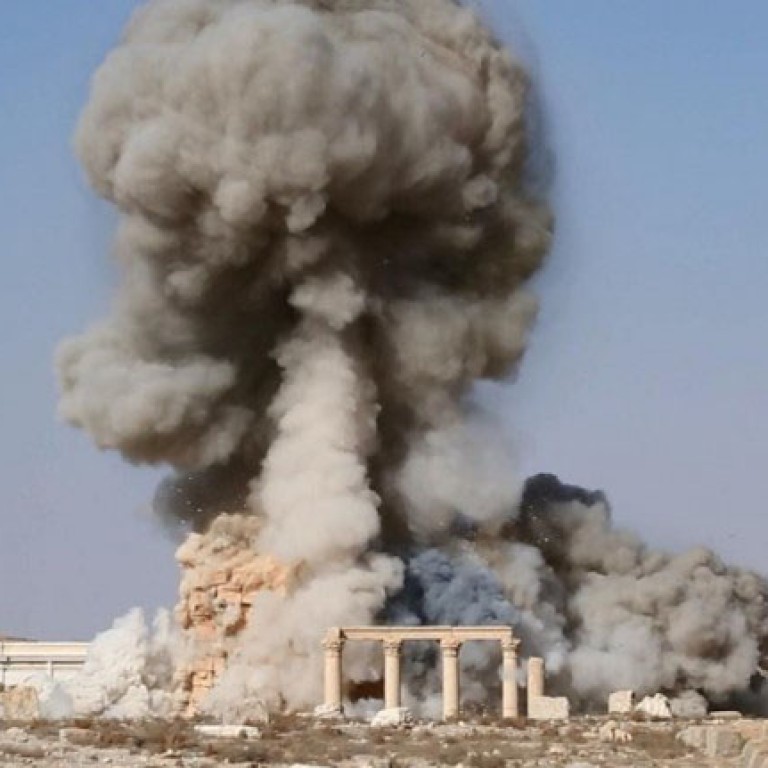
Photos show Islamic State blowing up famous 2,000-year-old Palmyra temple in Syria
The images show the explosives being set, the explosion and then the rubble
Islamic State militants published photos on Tuesday purporting to show the destruction of a Roman-era temple in the ancient Syrian city of Palmyra, an act the UN cultural agency Unesco has called a war crime.
Photos were distributed on social media showing explosives being carried inside, being set around the walls of the temple, the large explosion and then rubble.

The temple was built nearly 2,000 years ago and Unesco has described it as a symbol of Syria’s historical cultural diversity, which it says Islamic State is seeking to obliterate.
"It was a beautiful tourist attraction," antiquities chief Abdulkarim said. He said Islamic State had sought to destroy Palmyra's culture and economy, as well as killing the long-serving keeper of its ancient ruins.

Syria’s antiquities chief said last week Islamic State had beheaded Khaled al-Asaad and hung his body in public.
Islamic State, which holds tracts of Syria and Iraq, seized the desert city of Palmyra in May from government forces but initially left its ancient sites undamaged.
It has carried out killings of people it accused of being government supporters in Palmyra’s ancient amphitheatre, according to activists.

Before the capture of the city, site of some of the world’s most extensive and best-preserved Roman ruins, Syrian officials said they had moved hundreds of ancient statues to safe locations.
But they had voiced fears about the fate of large structures such as the temple.
Islamic State has proclaimed a caliphate to rule over all Muslims from territory it holds in both Syria and Iraq. Its militants have a history of carrying out mass killings in places they capture and of demolishing monuments which they consider pagan and idolatrous.

